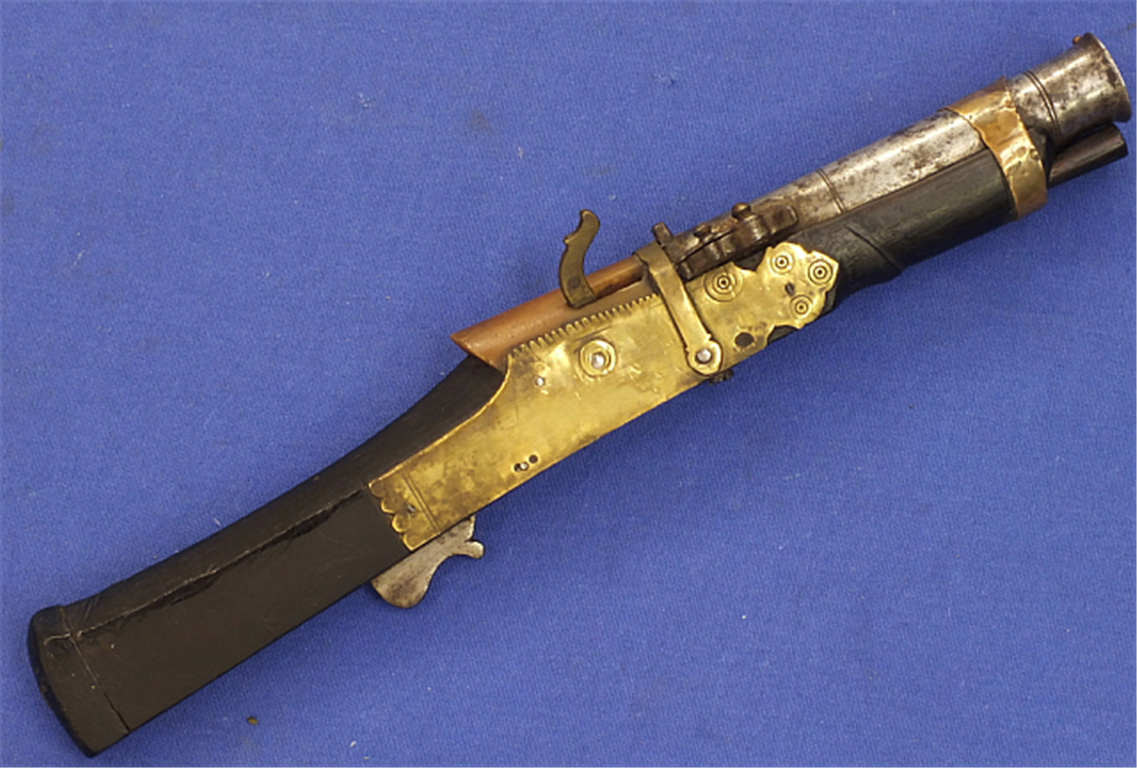Lets start nearby Europe with some Ottoman Guns

The Ottomans were rather keen on Arquebuses and Muskets. They adopted them early and extensively and kept their designs up to date in most regards, moving to flintlocks at the same time the Europeans did, which is not surprising given the fact that the Ottomans regularly traded with and fought with them. That said they had an odd aversion to bayonets, which they saw as an infidel weapon. As you can see, they were quite fond of ornamenting their guns with gold leaf and gems.
Now onto Iran...

This is a Jezail, a type of musket from Pakistan, Iran and Afghanistan. This category of musket includes both matchlocks and (as depicted here) flintlock mechanisms. Some of them were rifled and were used as sniper weapons, as the British found out when they invaded Afghanistan.
Now onto India...

Indian arquebuses (known as Toradar) were fairly common and the Mughal Dynasty made fairly extensive use of them, though they did not get beyond the matchlock phase and their mechanisms were fairly simple serpentine affairs. Some of these muskets were made with barrels of Damascus Steel. Cow Dung was used for wadding in their rifles.
They also used matchlock pistols. These were quite rare in Europe.

Now to China.
The Chinese were the first to make gunpowder and guns, but they stopped advancing their firearms technology after the Ming Dynasty. The Qing Dynasty held little interest in firearms for several reasons, among them being conservative and the fact that they placed a lot of value on archery. Never the less they did make use of them, though they remained basic serpentine affairs.
Among the variants of firearms they did use were "Wall Guns", large caliber muskets designed to be fired from a wall, or, if used in the field, were operated by two guys like such.

Now to Tibet...

Tibetan matchlocks usually had a a bipod attached to them and would remain in use until the 1950s when the PLA invaded.
Now to Japan

Japanese matchlocks (known as Teppo or Tanegashima) are based off of a Portuguese design and use a snap matchlock mechanism. They were used extensively during the Sengoku Jidai in the 1500s, during which time the various Japanese clans would come to master the use of these weapons with sophisticated pike and shot tactics. Mastery of these weapons would ultimately lead to Japan's reunification by Oba Norbunaga. They would remain in use through the Tokugawa Shogunate and saw some use in the Boshin wars. Some of these weapons were apparently converted to Flintlocks in the last stages of the Edo period based on Rangaku (Dutch Learning).
The Japanese also used matchlock pistols. They were also keen on ornamentation, using acid washes and similar.

Finally Korea.

The Hermit Kingdom of Joeson Korea did make use of firearms. This example from the 19th century or so shows both the influence of Chinese and Japanese firearms. The grip is more Chinese style while it uses a Japanese style snap mechanism.
Zor




